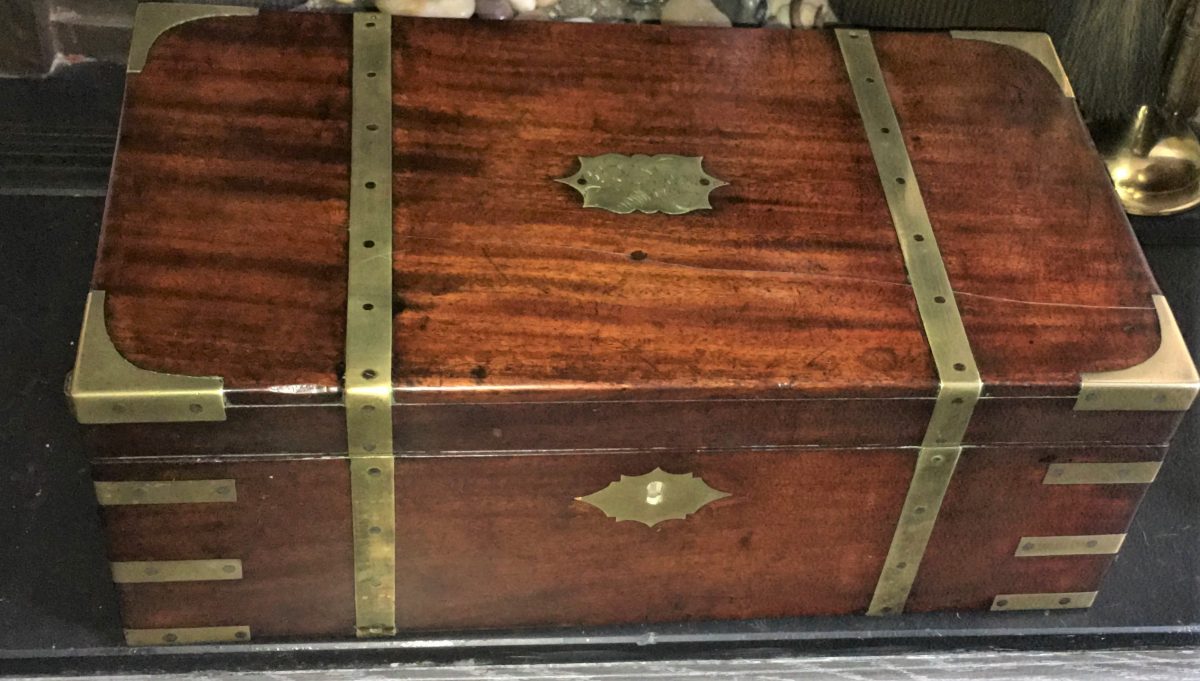It all started with a box. Or at least an antique English 18th century travelling writing chest, or more correctly writing slope, which my father’s sister rescued from the cellar of my Great Aunt Edna’s house in Camps Bay and kept on display in her living room for four decades. Finally, when the family home was sold, it returned across the seas (though by air this time) to London and my living room.
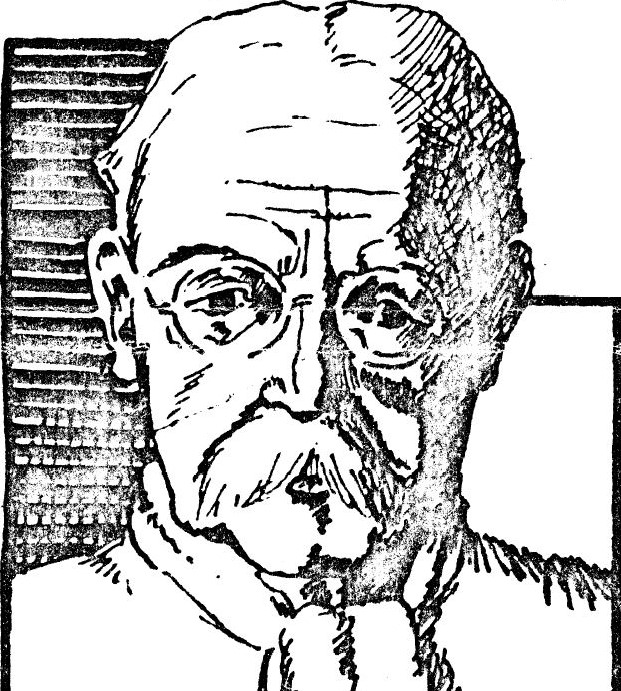
I had been fascinated by it as a young child, with its hidden drawers and compartments, but most especially by the 19th and early 20th century newspaper clippings which had been carefully stored there. These were mostly birth and marriage notices of our Barends ancestors. Engraved in an elaborate copperplate script on a brass inlaid plate on the lid was the name S H Barends. Who he was, remained a mystery.
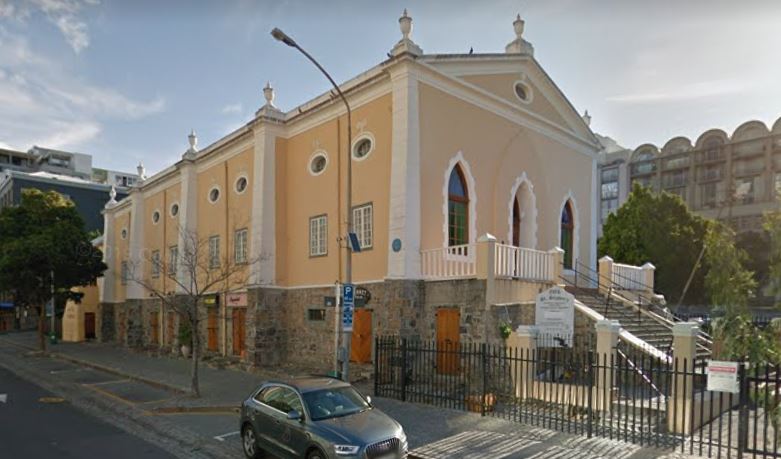
What did we know? The Barends family in Camps Bay were all the descendants of a Charles Samuel Barends, my great great grandfather, and the chest had presumably come from him. Inside were some clippings from the Cape Argus about his retirement in 1930 age 82. For 50 years he had run a shop in the basement of St Stephen’s Church, on Bree Street in Riebeeck Square, which he had taken over from his father, and he was described as Cape Town’s “last Master Cooper”.
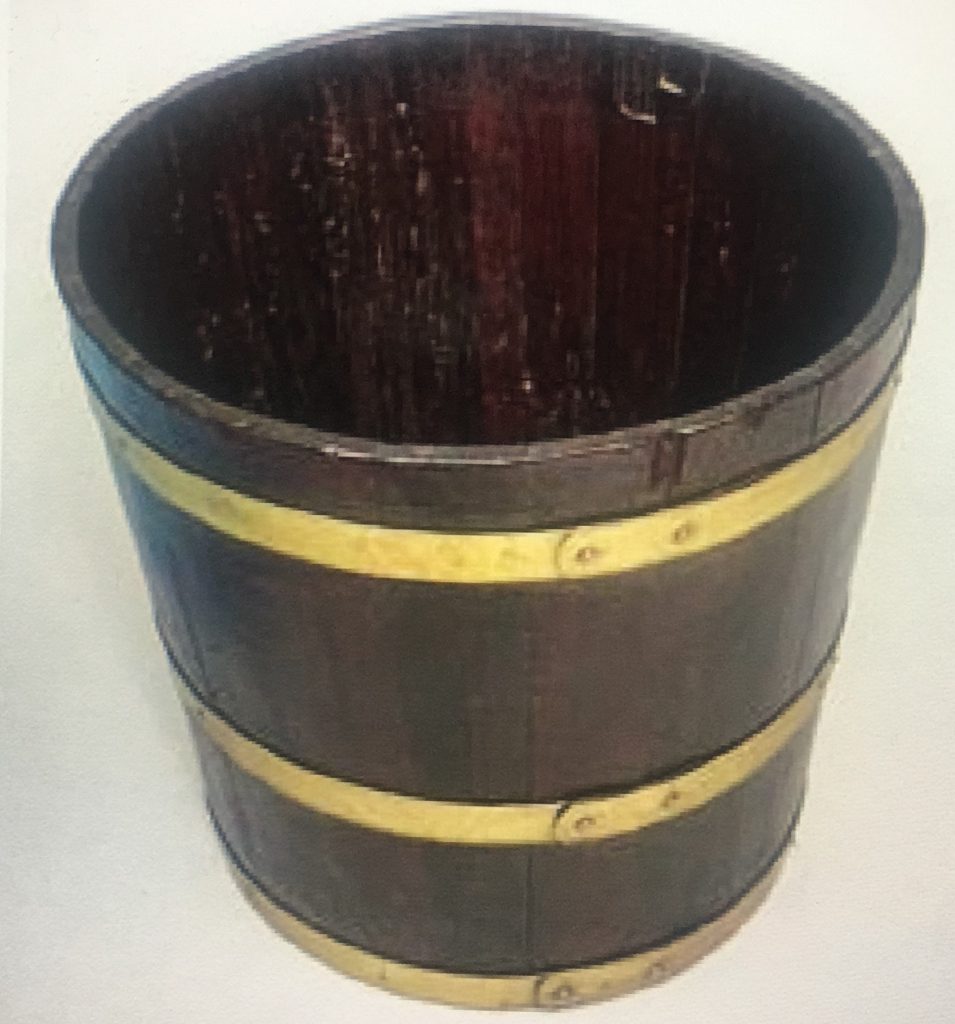
His workshop produced brass-bound teak barrels and buckets, as well as woven reed baskets and chair seats.
He had taken his children every summer to camp in the pine forest near the beach in Camps Bay before the first world war, when almost no one lived there.
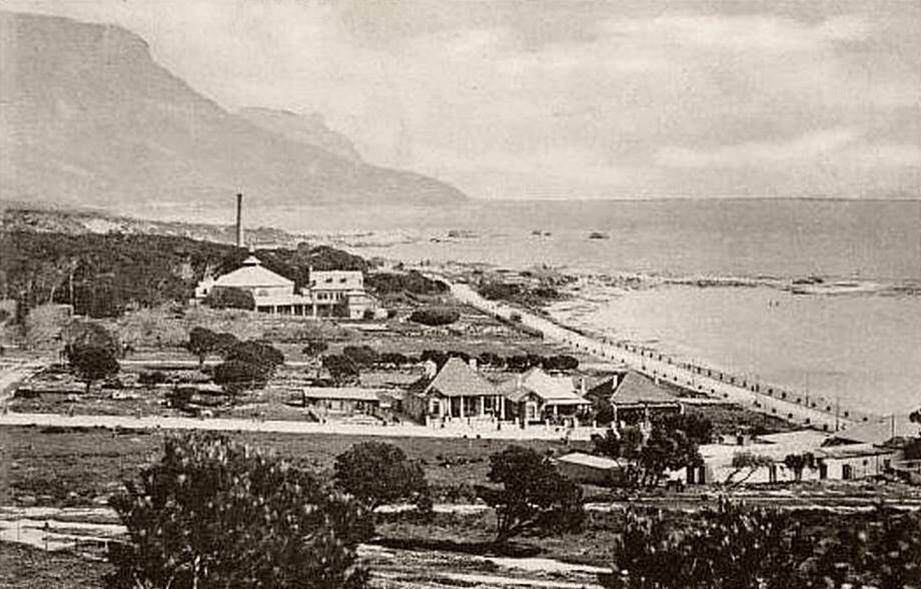
In due course some moved there permanently, including his eldest son (my great grandfather Arthur John) and his youngest son Harry. The house “AJ” bought in 1920’s remained in the family for just under 100 years, and became the nucleus of a Barends enclave of seven neighbouring properties occupied by his descendants over four generations.
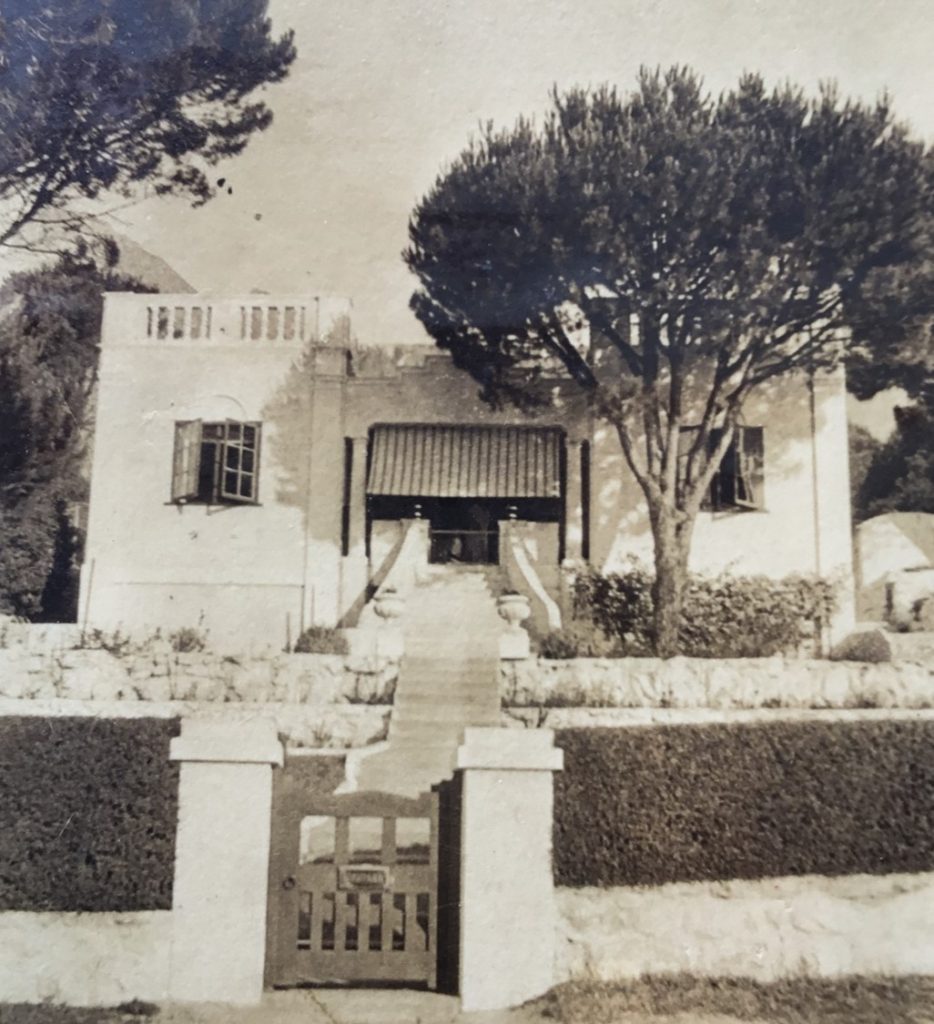
Our family name, however, was somewhat of a mystery. Self evidently (as we thought) Dutch in origin, the family had been English speaking as far back as anyone knew or remembered, and all marriages we knew of had been into English families. How had this change of mother-tongue happened, and what were Charles Samuel’s origins? There was a clue in the box: a newspaper report from 1900 of the funeral of a William Haynes Wade Barends, well known in Cape Town for his shop in the basement of St Stephen’s Church. We can assume this was Charles’s father. But that is as far back as we went.
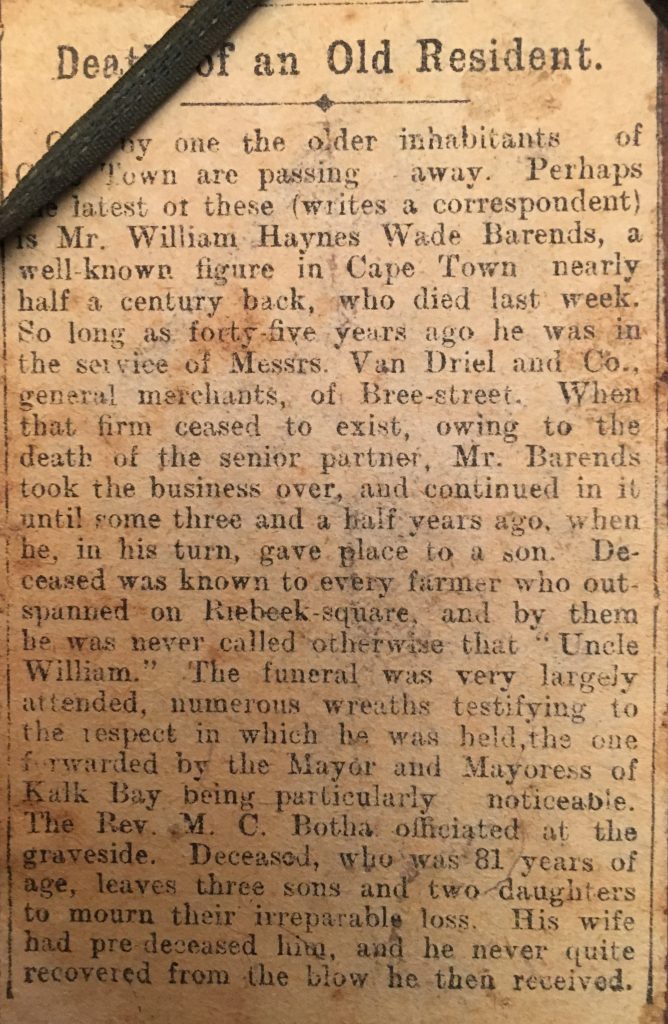
Here was my first genealogical challenge.
Using the genealogy apps that have proliferated over the past decade, and searching the web more broadly, the unusual combination of William Haynes Wade brought up a gravestone that had been photographed and entered into a database set up by the Genealogical Society of South Africa.
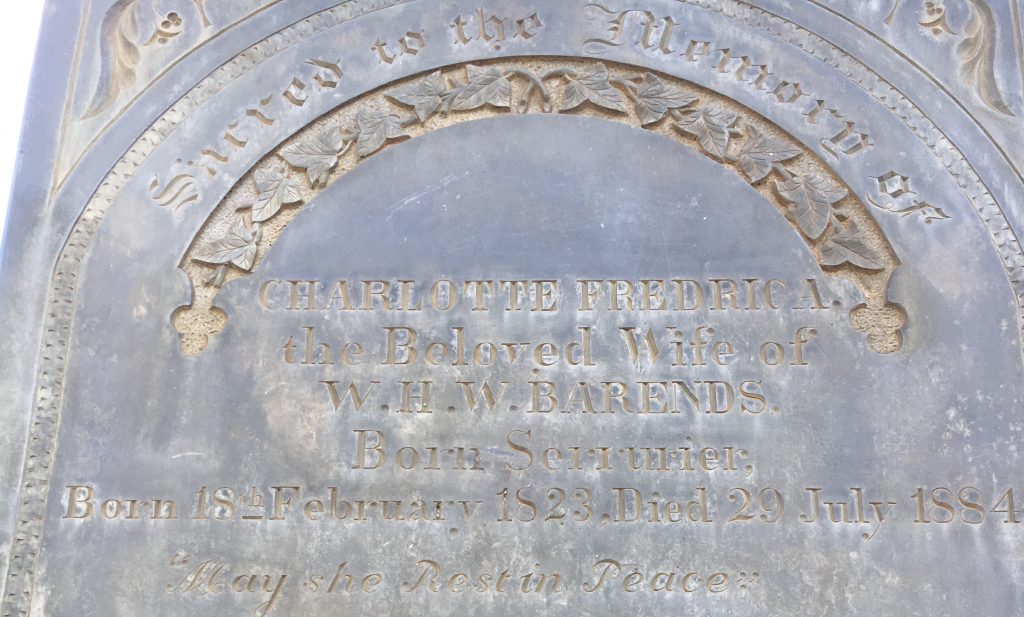
The gravestone was originally erected by William for his wife, and so this showed her to have been Charlotte Fredrica born Serrurier, and the headstone gave her full dates of birth and death. Charlotte’s story must wait for another time, but all this data opened up the rest of their family of eight children, of whom Charles Samuel was the eldest. But all of this gave no clue as to William’s parents. Searches for Death Notices and baptisms on my usual genealogical apps led no-where.
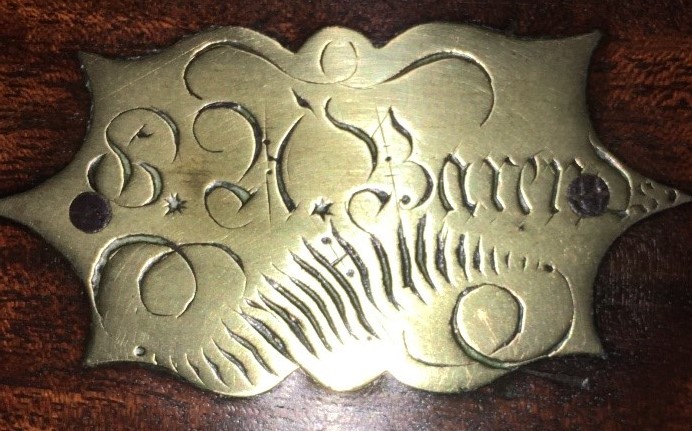
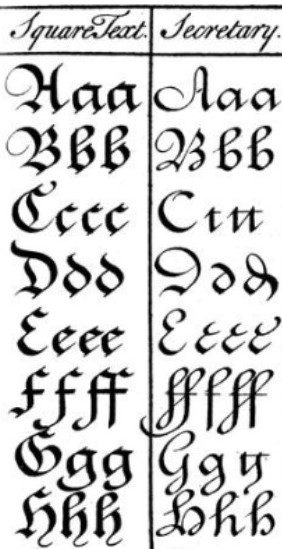
Meanwhile I was drawn back to the writing chest and its nameplate. The two initials seemed to be SH, but I wasn’t entirely convinced of this, and began to research 18th C engravers scripts. After a few dead ends I finally came across the exact template script, and it was absolutely clear that the initials were in fact G. A. Barends. (A quick look will show how much the A resembles an H to modern eyes, and the G is barely different from a modern S, but very different from the C in that script).
A quick cross-check on the Cape Archives index on-line revealed a Godlieb Andreas Barends with a number of important records available (but not on-line). It was time to come off-line and get my hands on the actual hard copies. It needed a trip to the Cape Archives. Would I be able to link this GA to William Haynes Wade and thus to my chest?
It’s hard to describe the thrill of making such a connection in the presence of original manuscript records, even in the rather nondescript environs of the public reading room of the Cape Archives. I put in a request for the Death Notice of William Haynes Wade Barends. And there was his father: Godlieb Barends. Had I found the original owner of the writing chest?
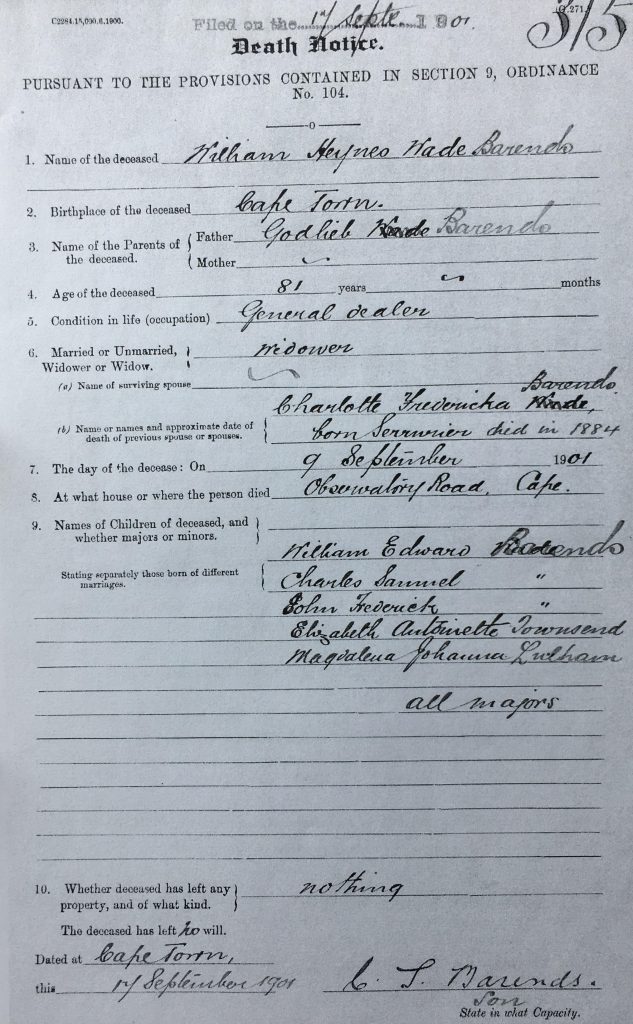
I then requested the records of his insolvent estate from 1817. Godlieb (I will use this spelling, but it also appears as Gottlieb and Gotlieb) was a minor official working for the Dutch East India Company in a clerical position. But in the early 19th C he had borrowed rather too much to support his relatively affluent (it seems) lifestyle, and had to declare bankruptcy. The paperwork is fascinating, but particularly the inventory of items sold at a public auction on the 7th of July. It doesn’t take much fluency in Dutch to recognise what a “Schryf Kisje” is – a (small) writing chest. One of his most valuable items (after his horses and slaves). Of course the record proves it was bought by one Thomas Drury – but somehow he must subsequently have bought it back, or perhaps his son did. His mother (Wed. Barends – “the widow Barends”), for example, bought his shaving chest (“Een Scheer doos”), presumably to give back to him!

The other important document relating to Godlieb in the archives, is a “Memorial” (the term used for a formal request to the governor) requesting a special dispensation to marry his long-time partner and the mother of his children on his deathbed, without waiting for the usual formality of reading the Banns publicly in church over a few weeks. His wife was Jacobina Petronella Dianas of Bengal – a freed slave, or daughter of a slave. And until his deathbed, she had merely been his “cohabitee”. But his final act was to give the status denied her during his lifetime. And in Directories subsequently she is listed as the “Widow G.A. Barends”.
Requesting her Death Notice at the Archives confirmed William Haynes Wade as her son. Her death notice omits her parents and actually gives “Bengal” as her place of birth, but this might be an assumption based on her name. William Haynes Wade, it turns out, was mixed race, and described as such on his death certificate.
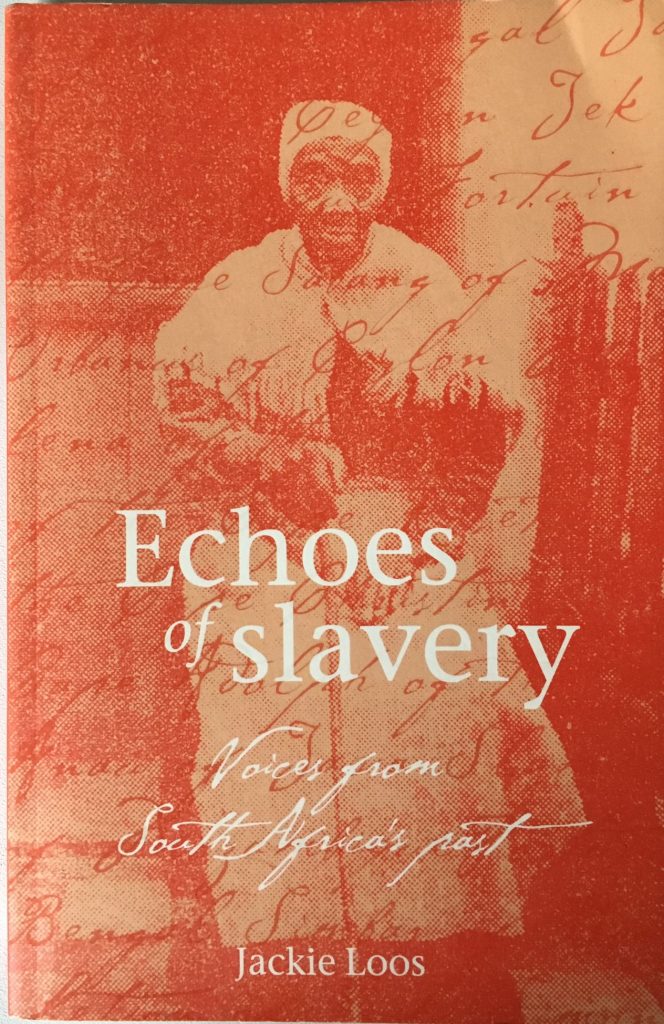
Once Godlieb and Jacobina Petronella Dianas were identified, his parents and grandparents were waiting to be uncovered: research amongst early settlers and their relationships with slaves has been published a decade ago, and this family had been well researched and written about. In particular Jackie Loos has researched the family and their extended circle for her Cape Argus columns “The Way We Were” and her book, Echoes of Slavery.
Godlieb’s father was Jan George Barends, and his father in turn was the progenitor of our family in South Africa: Johann Godlieb Barends
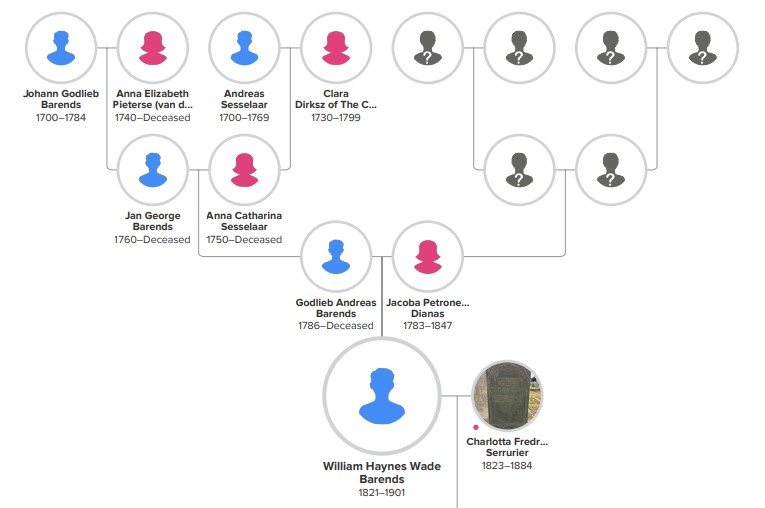
Johann Godlieb Barends was not Dutch after all, but a German master bricklayer brought to the Cape by the Dutch East India Company (VOC) to help build Cape Town. He came from Zerbst, Saxony-Anhalt, in modern day Germany and arrived at the Cape in 1749. We don’t know when he was born but at a guess around 1700 – 1710. His name seems originally to have been something like Bahrens or Bärens (these are variations in his actual VOC documentation), but was adapted to the more familiar Dutch form “Barends” on arrival at the Cape. (The family seemed to record themselves in this form, but other officials wrote the name variously as Barents, Barendse, or Barendsz).
We know about Godlieb through his indentured contracts with the VOC (mason 1751-53, loaned out 1753-63, master mason 1763-71) and his Estate Papers from his death in 1784 where he is described as “baas metselaar” or master mason. (Ref. Cape Archives MOOC 8/49.49). He was survived by his widow and three children.
On 28 May 1758 he had married Elisabeth Pieterse (also known as Anna Elisabeth of the Cape) and their eldest son Johan George (also known as Ian or Jan) was baptised on 17 August 1760.

“Van de Caab” was not a surname but an indication that the mother was “from the Cape” or born locally – almost invariably of mixed race and possibly Khoi.
Jan George married another member of the Christian free black community, Johanna Catharina Sesselaar (Swiss father and Cape mother) and they had three children: Godlieb Andreas, Jan George and Antoinetta Barendina. And it is Antoinetta who sort of closes this circle, bringing us back to that newspaper clipping about William Haynes Wade’s funeral. She married Roelof Hendrik van Driel who owned and ran Messrs Van Driel and Co, a General Dealer in Bree Street, in the basement of St Stephen’s Church, Riebeeck Square, where her young nephew William Haynes Wade Barends came to work. In due course he took over the shop, and later passed it to his son Charles Samuel, who ran it till his retirement in 1930, when he gave his grandfathers’s old schryf kisje to his son Arthur in Camps Bay.
And yet … is the circle closed at all? During my internet research I came across an eight year old post on a genealogical forum:
May 13, 2011 Dagse Vriende, Is daar iemand wat die Barends mense navors? Eh het ‘n Charles Samuel Barends (*5 Aug 1848, +26 Okt 1936), getroud met Sarah Caroline Jeary (*14 Apr 1857,+9 Nov 1935). Bly in die 1860 – 80’s en moontlik later in Stuckeris Str, Distrik 6, Kaapstad. Sy SK gee nie sy ouers se name nie, en ek hak nou by hom vas. Enige informasie sal welkom wees. Groete Johan Oberholzer
[Hello Friends. Is there anyone researching the Barends’? I have a Charles Samuel Barends married to Sarah Caroline Jeary. Lived in the 1860 – 80’s and possibly later in Stuckeris St District Six Cape Town. His Death Notice doesn’t give his parents names and I am stuck here with him. Any information would be welcome. Best Johan Oberholzer.]
Before long I found myself corresponding with the husband of a previously unknown 3rd cousin and descendent of Charles Samuel. And he had in the intervening years tracked down a baptism record for Charles Samuel, and it turns out Charlotta Serurrier baptised him three years before marrying William Haynes Wade.

I will not digress further into her story here, but in short she was from a very prominent Cape Town family, by family tradition a “raven-haired beauty”, previously married with three children. Her husband disappears from the record after the birth of their 3rd child. When that child is three, she sneaks from the Dutch Reformed Church where she and her children were baptised (and her grandfather had been the minister) across the road to the newly established English Church of St George and has a fatherless baby baptised. Three years later she remarries a man of mixed race, William Barends (his father Godlieb and her uncle were acquainted so they may have been childhood friends). He provides a good home for her and her children, and gives her five more (plus another two who died in infancy). And he gives his name to Charles Samuel and William Edward who was born the year before Charles Samuel. Her first three children keep their father’s name of Denyssen, only William and Charles Samuel becomes Barends’. The relationship must have been going on for some years before the marriage. I had wondered if the sons born before the marriage were not descended from the Barends’ at all. But a recent DNA match with a distant cousin descended from William Haynes Wade’s grandfather has confirmed the descent from Johan Gottlieb the mason from Germany.

Curiously, my DNA results bear this out: I do have some Bengali genes that must have been Jacobina’s: 0.3%. Specifically, Bengali!
[I have edited and updated the original post to include new DNA information discovered recently].
Notes:
- Spelling of names is always variable this far back, and I have adopted the most commonly found versions. William Haynes Wade’s own son misspelled his fathers middle name on his gravestone, assuming a Dutch “Heynes” for what is an English “Haynes” – and there’s another whole tale in that name)
- The “raven-haired beauty” story comes from Dr Robin Pelteret who interviewed a descendent of the Serrurier family. http://www.pelteret.co.za
- Jackie Loos’s excellent “Echoes of Slavery – Voices from South Africa’s Past” was published by David Philip in 2004.
- Estate Papers and Inventory of Johan Godlieb Barendsz, dated 7 Aug. 1784, MOOC 8 49.49 http://databases.tanap.net/mooc/main_article.cfm?id=MOOC8%2F49%2E49&freesearchkey=Barendsz
- Godlieb’s memorial requesting dispensation to marry can be found at the Cape Archives under the reference: KAB; Source: CO; Vol. No.: 3961; Ref. No.: 117. It (rather movingly) reads:
1833
To Sir Lowry Cole
The memorial of Godlieb Andreas Barends humbly showeth:
That your Excellency’s Memorialist is now labouring under serious indisposition from which he is not likely ever to recover and having for nearly 28 years cohabited with a woman named Jacobina Petronella Dianas by whom he has a large family is desirous of marrying her before his death.
That memorialist uncertain whether he will live long enough to have his banns published in the usual manner before his marriage humbly prays your Excellency will be pleased to grant him a dispensation of the same.
Memorialist, as in duty bound, will ever pray,
GABarends
(The opening and closing form of words is traditional to these Memorials or personal requests to the Governor)

